This load case is similar to OC4 P2 LC2.2, which does not include wind loading. Generally speaking, the comparisons presented here are very similar also. Results for irregular wave cases are presented in terms of mean and variance of key parameters rather than full time histories. To facilitate comparisons, Robertson et al. (2014) focus on the key outputs of platform surge, platform pitch and bending moment at the base of the tower. Generator power is also considered here, building on the results presented for the earlier load cases. Flexcom shows good agreement with the other software tools. Note that results from Bladed (GH) were not found in the IEA Wind Task 30 results library, so we have used results from Bladed Advanced Hydro Beta (GH) instead in this comparison.
Good agreement is shown between all software tools, including Flexcom, for the mean surge response. Some variation is expected depending on how drift forces are being modelled (refer to OC4 P2 LC2.1 for further information). The inclusion of wind tends to improve the correlation in surge results, because the wind thrust force is much larger than the hydrodynamic drift force, and hence the mean surge offset is significantly greater when wind is included.
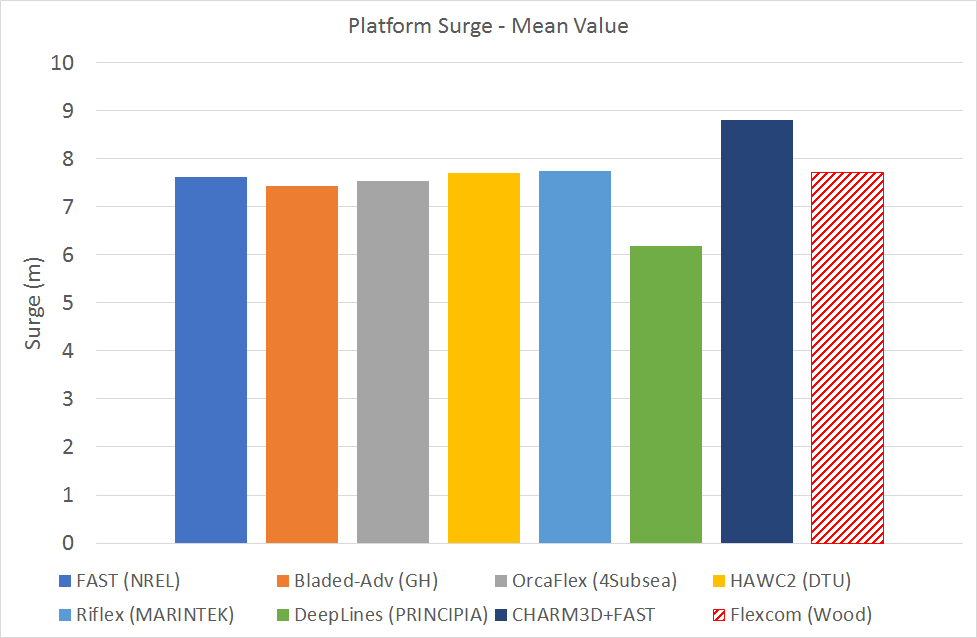
Close agreement is shown between all software tools, including Flexcom, for the mean pitch response. The inclusion of wind tends to improve the correlation in pitch results, because the wind thrust force is much larger than the hydrodynamic drift force, and hence the mean pitch offset is significantly greater when wind is included.
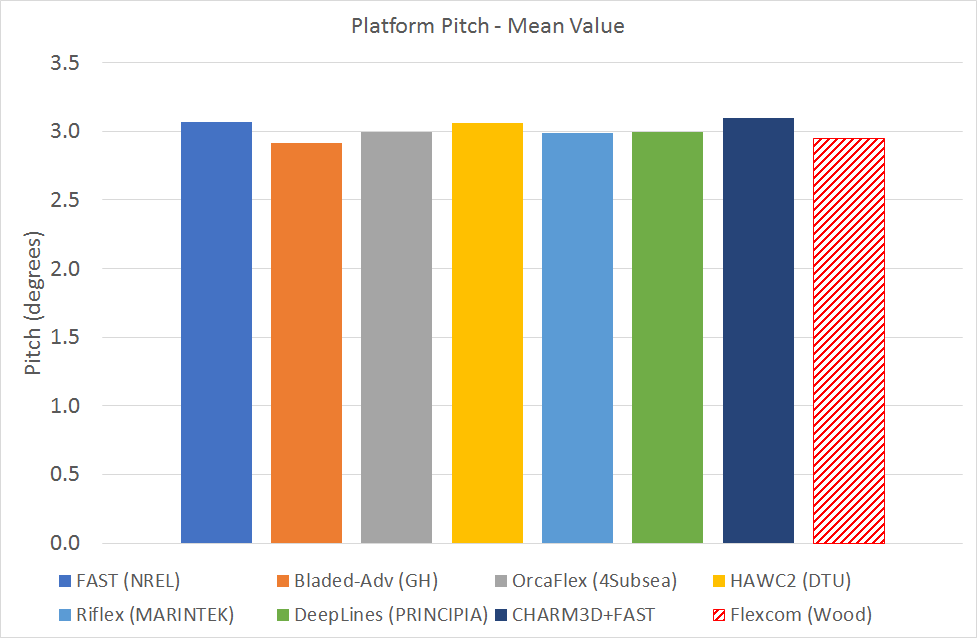
Close agreement is shown between all software tools, including Flexcom, for the mean tower base moment.
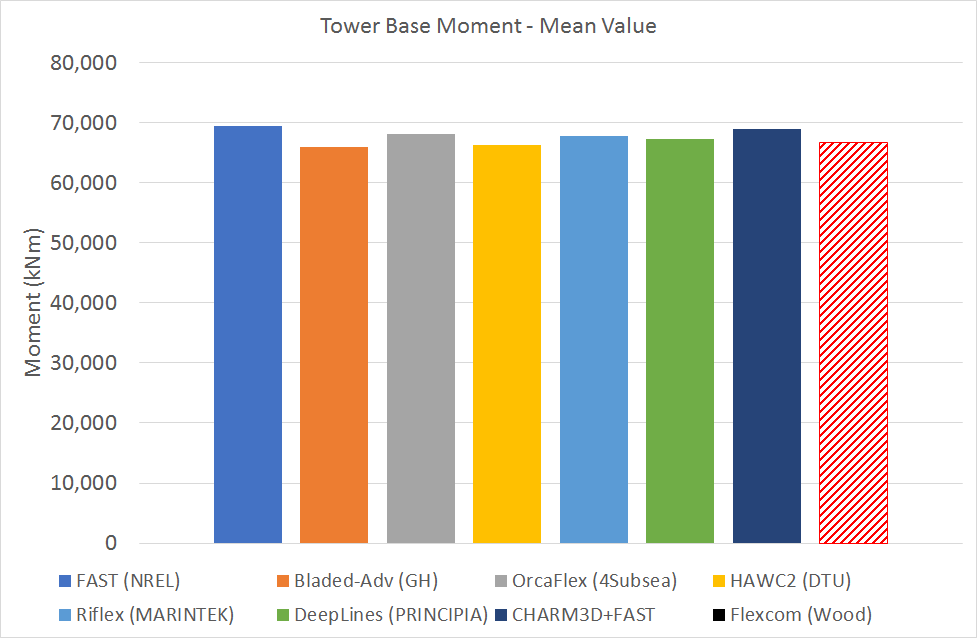
Good agreement is shown between all software tools for the mean generator power. The generator power predicted by Flexcom is slightly lower than most of the other software tools - Flexcom's mean power is 4.16MW, 10.1% below the average. This may sound quite significant, but it is worth noting that there is a 10.6% variation across the other software tools also.
It is worth noting that the Flexcom results were produced using Flexcom 8.12.1 which is coupled with AeroDyn V15.02.04 (14-Apr-2016). The OC4 Phase II results were published in 2014 at which point the latest version of AeroDyn was Version 14. Improvements to the aerodynamic modelling software primarily account for the differences in generator power predicted by Flexcom and FAST (NREL). Slightly different platform motions predicted by each software tool also influences generator power. Variations in the aerodynamic theories underpinning each software product may also be a contributing factor. You are referred to OC4 P2 LC3.1 if you are interested in a more detailed discussion.
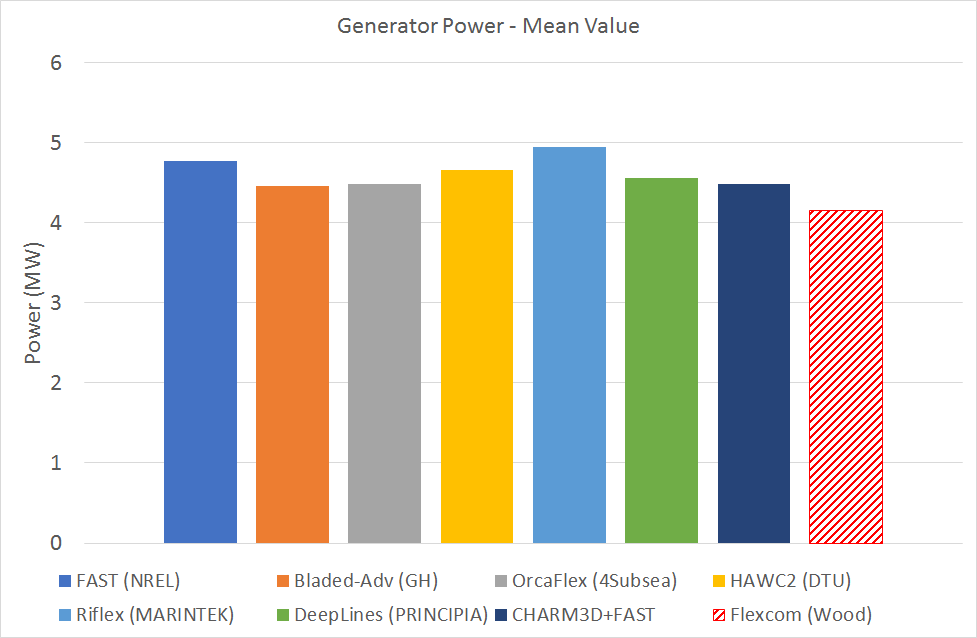
Variance of Response
The variance in surge shows some variation across the different software products, again possibly caused by different approaches to modelling drift forces. Results from Charm3D+FAST (ABS) show a surge variance which is larger than the other software tools.
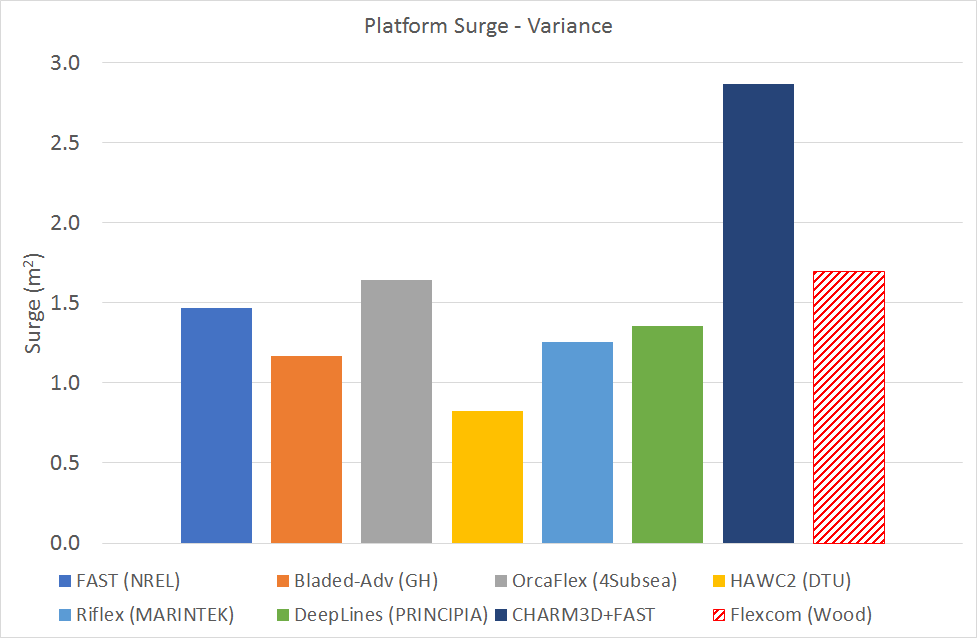
The variance in pitch shows some variation across the different software products. However the response predicted by Flexcom shows good general agreement with the average value.
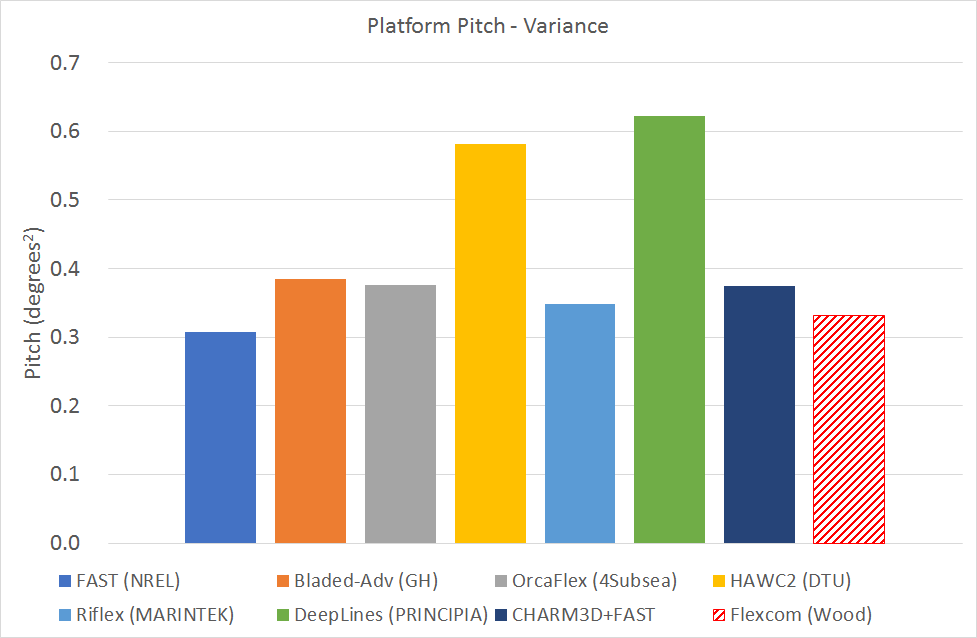
The variance in tower base moment shows reasonable agreement across the different software products, with the exception of HAWC2 (DTU) which appears to be inconsistent with the others. Robertson et al. (2014) suggest that this probably results from an incorrectly prescribed axis definition for the output.
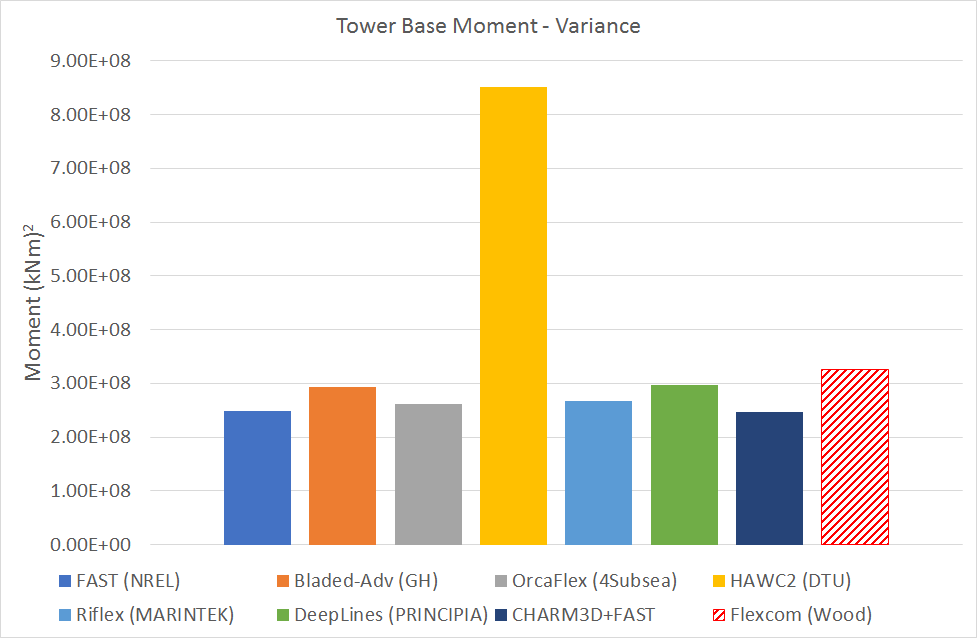
The variance in generator power shows considerable variation across the different software products.
It is worth noting that the Flexcom results were produced using Flexcom 8.12.1 which is coupled with AeroDyn V15.02.04 (14-Apr-2016). The OC4 Phase II results were published in 2014 at which point the latest version of AeroDyn was Version 14. Improvements to the aerodynamic modelling software primarily account for the differences in generator power predicted by Flexcom and FAST (NREL). Slightly different platform motions predicted by each software tool also influences generator power. Variations in the aerodynamic theories underpinning each software product may also be a contributing factor. You are referred to OC4 P2 LC3.1 if you are interested in a more detailed discussion.
